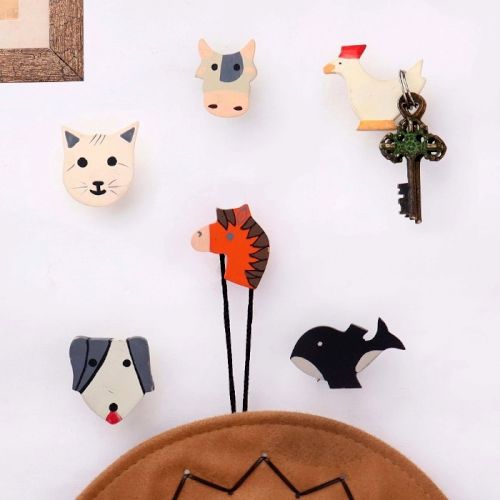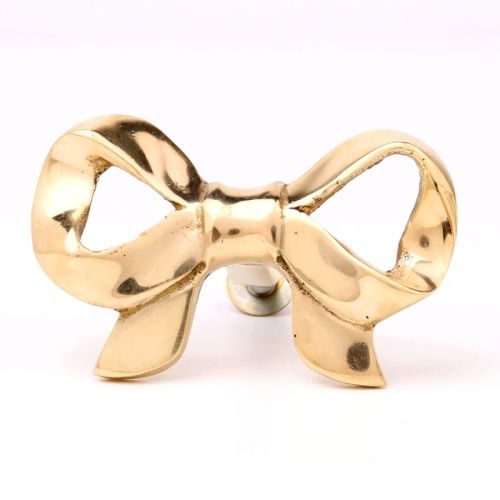Bringing Home Divine Grace: The Timeless Appeal of Bronze Ganesha Idols
A Bronze Ganesha Idol is more than just a decorative piece—it represents a rich tradition of craftsmanship, spirituality, and devotion. Revered in households and temples alike, these idols reflect the divine presence of Lord Ganesha, the remover of obstacles and harbinger of wisdom and prosperity. This article explores everything about bronze Ganesha statues, from their significance to choosing the perfect one for your home or gifting.
Crafted meticulously by skilled artisans, bronze Ganesha idols are known for their durability, intricate detailing, and timeless appeal. The process of making these idols involves traditional metal casting techniques that have been passed down through generations, ensuring that each piece is a masterpiece in its own right. Whether in a sitting, dancing, or blessing posture, each form of Lord Ganesha carries a unique symbolism, adding to the spiritual and aesthetic value of the idol.
Significance of Bronze Ganesha Statues
Bronze, a durable and timeless alloy, has been a preferred material for crafting idols in India for centuries. Its rich, earthy hue and exceptional malleability enable artisans to create intricately detailed statues that exude both elegance and spiritual significance.
In Hindu tradition, Lord Ganesha, the remover of obstacles and the harbinger of wisdom and prosperity, is often worshipped in the form of beautifully sculpted bronze idols. These statues are not just decorative elements but hold deep religious and cultural value. The use of bronze enhances the divine presence of the idol, ensuring its longevity and resistance to corrosion, making it ideal for both temple worship and home altars.
A bronze Ganesh murti is often chosen for its aesthetic and symbolic appeal. The material’s ability to develop a natural patina over time adds to the idol’s antique charm, further elevating its spiritual aura. Additionally, the metal’s strength ensures that these idols can be passed down through generations as sacred heirlooms.
Whether displayed in temples, homes, or even workplaces, a bronze Ganesha statue serves as a source of positivity, devotion, and artistic excellence, seamlessly blending tradition with artistic craftsmanship.
Spiritual Significance of Lord Ganesha Idols
A bronze Ganpati idol is a symbol of divine energy and spiritual significance. Lord Ganesha, revered as the remover of obstacles and the harbinger of wisdom, is an integral part of Hindu traditions. A bronze idol of Ganpati serves as an ideal centerpiece for daily prayers, meditation, and religious ceremonies, instilling a sense of peace and devotion in the surroundings.
According to Vastu Shastra, the ancient Indian science of architecture and spatial arrangement, the placement of a bronze Vinayaka statue plays a crucial role in channeling positive energy. When positioned in the right direction—such as the northeast or west—it is believed to attract prosperity, remove hurdles, and eliminate negative influences. The presence of a well-crafted bronze Ganesha idol in homes or places of worship creates a sacred ambiance, fostering spiritual growth, mental clarity, and emotional balance.
Different Types of Bronze Ganesha Idols
Lord Ganesha, the revered deity of wisdom, prosperity, and good fortune, is often depicted in various forms, each carrying deep symbolic meaning. Bronze Ganesha idols are highly sought after for their durability, aesthetic appeal, and spiritual significance. Below are some of the most popular types of bronze Ganesha statues:
Traditional Bronze Ganesha
These statues are among the most commonly found representations of Lord Ganesha. Typically, he is depicted seated on a lotus flower, which symbolizes purity, enlightenment, and spiritual detachment from worldly affairs. The intricate craftsmanship often includes detailed ornaments adorning the idol, a modak (a sweet delicacy) in one of his hands symbolizing rewards for devotion, and his vehicle, the mouse, positioned at his feet, representing humility and the ability to overcome obstacles. These traditional idols are perfect for worship and home décor, exuding an aura of divine grace.
Dancing Ganesha
For those who appreciate artistic and dynamic sculptures, the Dancing Ganesha idol is a stunning choice. This form captures Lord Ganesha in a lively dance posture, symbolizing joy, creativity, and boundless energy. It is often associated with the Tandava, a cosmic dance of creation and destruction, illustrating the cyclical nature of life. These statues are ideal for individuals seeking inspiration in the arts or as a vibrant decorative piece that brings life and movement to any space.
Vintage Bronze Ganesha Murti
Vintage style bronze Ganesha idols possess a rustic, old-world charm that makes them an excellent addition to vintage-themed interiors and sacred spaces. These idols are often handcrafted by skilled artisans, ensuring that each piece is unique and rich in detail. The aged patina on the bronze adds an element of authenticity and timelessness, making these murtis perfect for collectors and those who appreciate heritage-inspired décor.
Bal Ganesha Murti
The Bal Ganesha murti portrays Lord Ganesha in his childhood form, embodying innocence, playfulness, and endearing charm. This depiction is especially favored by devotees who seek to connect with the benevolent and affectionate aspect of Ganesha. Bal Ganesha idols are particularly popular during Ganesh Chaturthi, a festival celebrating his birth, where devotees bring home these delightful representations to invoke his blessings for prosperity and protection.
Choosing the Right Bronze Ganesha Idol
Selecting the perfect bronze Ganesha idol requires careful consideration of various factors to ensure it aligns with both aesthetic preferences and spiritual beliefs. Here are key aspects to keep in mind:
1. Purpose
If you are looking for a Ganesha idol for home décor, a compact and intricately designed bronze statue is ideal. It serves as a beautiful and auspicious addition to any space.
For temples or places of worship, a larger statue, such as a 4 feet Ganesh murti, is recommended to create a divine focal point and encourage deeper devotion.
2. Design
Look for unique features that resonate with you. Some idols depict Ganesha holding a modak, symbolizing fulfillment, while others may showcase a Vinayagar bronze statue with intricate carvings that enhance its spiritual energy.
Pay attention to detailing, as finely crafted bronze idols exude a sense of craftsmanship and devotion.
3. Direction and Placement
It is considered auspicious to place a Ganesha idol facing north or east to attract positive energies and blessings.
Avoid placing Ganesha idols in the bedroom or bathroom, as these locations are not considered suitable for divine representations.
4. Size and Budget
If you have limited space, opt for a 1 feet Ganesh murti, which is compact yet elegant.
For grand installations in temples or public spaces, larger statues like a 108 feet Ganesh murti can be commissioned to create a monumental presence.
The price of bronze idols varies depending on size, craftsmanship, and detailing. Set a budget that aligns with your preferences while ensuring the idol retains its spiritual and artistic value.
Care and Maintenance of Bronze Ganesha Idols
Bronze idols are revered for their beauty, durability, and spiritual significance. Proper care and maintenance can help preserve their intricate details and luster for years. Follow these guidelines to ensure their longevity and aesthetic appeal.
Cleaning Tips:
Regular Dusting: Use a soft, dry microfiber cloth or a feather duster to remove surface dust. Regular dusting prevents the accumulation of grime and preserves the idol’s natural shine.
Deep Cleaning: To restore the idol’s original glow, mix fresh lemon juice with a small amount of salt and gently rub the surface with a soft cloth. This natural solution helps remove oxidation and enhances the shine.
Rinsing and Drying: If you use the lemon-salt mixture, wipe it off with a damp cloth and ensure the idol is completely dry before placing it back. Moisture can cause tarnishing over time.
Avoid Harsh Chemicals: Strong cleaning agents, bleach, or abrasive materials can damage the idol’s patina, leading to discoloration or surface erosion. Stick to mild, natural cleaners to maintain its finish.
Oil Polishing (Optional): Occasionally, applying a light coat of coconut or olive oil and buffing it gently with a soft cloth can enhance the idol’s sheen and protect it from environmental damage.
Placement Tips:
Keep Away from Direct Sunlight: Prolonged exposure to sunlight can cause discoloration or uneven fading of the idol’s surface. Place it in a shaded or indoor space to maintain its rich bronze tone.
Ensure Stability: Position the idol on a firm and level surface, such as a wooden or marble platform, to prevent accidental falls or damage.
Maintain a Clean Surrounding: Ensure the space around the idol is clean and free from excessive moisture or dust accumulation. A well-maintained environment enhances the idol’s longevity and spiritual ambiance.
Avoid Excessive Handling: Frequent touching or moving can leave fingerprints and cause tarnishing over time. If handling is necessary, use clean, dry hands or a soft cloth to minimize residue buildup.
By following these care and maintenance tips, you can preserve the elegance and spiritual essence of your bronze idols, allowing them to remain a cherished part of your home for generations.
Where to Buy Bronze Ganesha Idols?
With the increasing demand for authentic bronze idols, finding a high-quality Bronze Ganesha Idol has never been easier. IndianShelf offers an exquisite collection of handcrafted designs, catering to both traditional and contemporary preferences. Whether you are searching for an antique bronze Ganesh statue that reflects intricate craftsmanship, a handmade Ganesh murti that embodies devotion and artistry, or a Natraj Ganesh murti that symbolizes the divine cosmic dance, online marketplaces provide a vast array of choices. These platforms ensure a seamless shopping experience with detailed product descriptions, customer reviews, and convenient delivery options, making it easier for devotees and art enthusiasts to find the perfect idol for their home, office, or spiritual space.
Decorating Your Home with Bronze Ganesha Statues
Ganesha, the remover of obstacles and the harbinger of wisdom and prosperity, holds a special place in Hindu culture. A bronze Ganesha statue not only adds an artistic and spiritual touch to your home but also brings positive energy and harmony. The placement of these idols is crucial, as it enhances the overall aesthetic and significance of the space. Here are some ways to incorporate a bronze Ganesha statue into different areas of your home:
Entrance
The entrance of your home is where energy flows in, making it the perfect place for a Ganesha idol. Placing a beautifully crafted bronze Ganesha statue above or near the main door is believed to attract prosperity and ward off negative influences. It serves as a guardian deity, ensuring that only positive energies enter your home.
Living Room
A well-placed Ganesha statue in the living room not only enhances the décor but also fills the space with serenity and divine blessings. A bronze Ganesha centerpiece can serve as a striking focal point, adding a sense of elegance and spiritual ambiance to your interiors. You may place it on a console table, a mantelpiece, or a dedicated display shelf to create an inviting and harmonious atmosphere.
Puja Room
The puja room or home temple is the most sacred space in a house. A bronze Ganesha idol adorned with traditional ornaments and intricate detailing elevates the sanctity of your prayer area. Ensure that the idol is placed in the correct direction—preferably facing east or west—to maximize its spiritual benefits. Accompanied by fresh flowers, incense, and diyas, a Ganesha statue brings devotion and tranquility to your worship rituals.
By thoughtfully placing a bronze Ganesha statue in your home, you can create a harmonious balance between tradition, aesthetics, and spirituality, making your space more peaceful and prosperous.
Frequently Asked Questions About Bronze Ganesha Idols
Bronze Ganesha idols hold deep spiritual and cultural significance in Hinduism, often placed in homes and temples as representations of Lord Ganesha, the remover of obstacles and the god of wisdom. These idols are treasured for their intricate craftsmanship and the spiritual energy they bring to a space. Below are some frequently asked questions about these idols.
Can we keep two Ganesh idols at home?
While it's traditionally recommended to have only one idol of Lord Ganesha in the puja (prayer) room to maintain focus and avoid distractions, it is possible to keep multiple idols in the home if placed respectfully. The key is to ensure each idol has its own space and is treated with reverence. It's also important to note that the placement of the idols should be done thoughtfully, so as not to create a chaotic environment.
What is the ideal direction for placing a Ganesh idol?
For maximum auspiciousness and blessings, the idol of Lord Ganesha should be placed facing either the north or east direction. This is in line with vastu shastra principles, which suggest that these directions bring positive energy and harmony to the space. East is particularly auspicious, as it is the direction of the rising sun, symbolizing new beginnings and enlightenment.
How to identify an authentic bronze Ganesh murti?
Identifying an authentic bronze Ganesh idol involves checking several key factors:
- Craftsmanship: Authentic bronze idols have meticulous detailing, with clear and precise carvings. The facial expressions, clothing, and other features should be finely etched.
- Weight: Bronze idols tend to be heavy due to the metal used. A lightweight idol may indicate it is made from a lesser quality material or that it is hollow.
- Finish: Authentic idols will have a smooth, polished finish with a rich patina. The color should be uniform, without excessive gloss or unnatural sheen, which may point to a fake or low-quality product.
Can broken Ganesha idols be kept at home?
It is generally considered inauspicious to keep a broken idol at home, as it is believed that the idol's spiritual energy may be compromised. In such cases, it's recommended to immerse the broken idol in water or respectfully dispose of it according to traditional rituals. Some people may choose to offer the idol to a temple for proper disposal or immersion, as this ensures the idol is given a proper farewell.
Are there specific Ganesha idols for Ganesh Chaturthi?
Yes, during Ganesh Chaturthi, special idols are often used to celebrate the festival. Many people opt for vibrant and colorful Bal Ganesh idols, which depict Lord Ganesha as a child, symbolizing joy and innocence. Handmade idols are also particularly popular during this time, as they are believed to carry more personal and spiritual significance. These idols are often decorated with flowers, clothes, and other offerings to celebrate the divine presence of Ganesha during the festival.
A bronze Ganesha idol is not just an object of devotion but also a timeless work of art. Whether you’re seeking to enhance your home’s aesthetic, perform rituals, or gift someone a meaningful token, these idols are the perfect choice. Explore a wide range of bronze Ganesh idols online and bring home the divine grace of Lord Ganesha today.
For More Products - Bastar Art | Bronze Surma Dani | Bronze Ram and Hanuman Statue | Ganesha Statue for Home | Flower Pots Online | Natraj Murti | Pull Door Handles
FAQ
• North
• Northeast
• West
Similarly, making the idol face the northern part makes a good beginning as the same is the direction of Lord Shiva abode. This is very auspicious. Similarly, ensure that the back of the statue faces the main entrances to the home or business. It is best to opt for a place away from the south to place the idols, and it is not a suitable plan for your benefit.
Even if you are interested in storing more than one idol, it is good to have merely one Ganesha statue for the business. It is recommended to talk to an expert before purchasing a new one in the business premises.
The entire home needs to be cleaned before bringing the idol to your home. Ensure that the whole family is gathered in the evening to recite prayers. The same should also include durva, flowers, karanji, modals, etc.
Using turmeric shaded Ganesh idol is known to prevent any form of harm and negative impact. To attract people towards work and positive energy or actions then you need to have a red coloured Ganesha. Using a dark shade Ganesha is found to destroy negatively impact and hatred. You can choose the best one as per your requirement. For peace of mind, go for a white shade Ganesha idol.
As a result of the same, choosing the standing one is best for offices. It helps you to welcome guests. Thus, the best possible position is the sitting one that is both relaxed and reassuring. This assures that you achieve the best results for your needs and expectations. This brings only prosperity and happiness for you.
People who seek happiness and peace needs to confirm that if a particular Ganesha is effective. For instance - brass or white Ganesha is widely used. If you wish to proceed to achieve self-confidence and trust them. For this use, use vermillion shade one for the best results for your needs.
Also, the left side of the same must face the moon. This brings material gains and lucrative outcomes.
Nowadays, each household in India has new ways to celebrate the occasion. Therefore, Ganesha Chaturthi got tremendous success in Maharashtra.
Durva Grass is a three-bladed plant that has the direct power to attract the energy of the Ganpati. According to the mythological stories, Ganesha was fighting the demon and then the lord swallowed him. This gave him a strong burning sensation and when everything failed to give relief, he got 21 blades from the sages. This was durva and is also called as the dub and built. Thus, he gave a major change for common people and their problems.
Goddess Parvati became curious and wanted to know more about the same and when she learnt it was a Modak, she gave a request that others can also offer him Modak and the legend was carried forward by generations. Even today, the same is considered as a great prasad for the Lord.
Some also attribute the same to the fact that Lord Parshuram cut off one of the Ganesha tusks as he did not allow him to meet lord Shiva as he was busy in meditation and prayer.
Similarly, satori - A Maharashtrian dish that uses sweet, khoya, milk, ghee and besan. It is a rich delicacy and has a unique taste that makes it worth offering to Lord. Also, Puran Poli is a Maharashtra special that uses flat pieces of bread made of lentils, jaggery, etc. Ghee, elaichi, etc., is also important.
Lord Ganesha is also fond of eating motichoor ladoo, and this makes it a special for the occasion. These can melt in the mouth and are a perfect item for the bhog.
On Ganesh Chaturthi, devotees bring in the auspicious idols at home to show their love and affection for the most popular festival of the year. Similarly, offerings like the blog, Modak, hymns, etc. It brings out the importance of having a social aspect of life, being caring and honest towards the duty assigned and being dedicated to the situation while staying prudent.
Similarly, the money and gifts offered to the deity must not be kept at home and instead must be donated to needy or the local temple. You can opt for DIY solutions for your plan on creating Ganesha.
As a result, you can keep the idol for 1 ½ day, three, five, seven and up to 21 days before visarjan.
The same dates to the struggle for independence and when Lokmanya Tilak decided to remodel the private festival into the most popular ones. This was in 1893 and titled this as Sarvajanik Ganesh Utsav
While many people believe that the festival was initially celebrated during the Chalukya, Rashtrakutas, Satyavahana dynasties. They ruled by late 1190 AD. Then during the time of Chatrapati Shivaji Maharaj when Lord Ganesha was their Kuldevta or the principal deity. This was during 1600 in Pune. Then the same was celebrated by the Peshwa empire.
Ganesh Chaturthi is celebrated annually to mark the birth of the Lord and the God of new beginnings and a fresh start. He is the remover of obstacles and the God of wisdom. It is observed throughout India but that of Mumbai is most famous.
Historically, the festival is celebrated since the time of Shivaji. It was during freedom struggle that Lokmanya Tilak decided to celebrate that the same on National level and make it a famous celebration. The celebrations at Lalbagh are famous for their Ganesha Chaturthi.
Apart from the same, two idols of Goddess Gauri are brought home and worshipped along with elaborate rituals. Since Gauri is the epitome of Goddess Parvati, the two idols signify Goddess Saraswati and Laxmi. They are the daughters of Goddess Durga.
It is celebrated in states of Maharashtra, Gujarat, Goa, Madhya Pradesh, etc. with pomp and grandeur. It is considered as one of the most important festivals of Maharashtra, and it is associated with prosperity and good luck.
Lord Shiva and Parvati decided to search for a suitable bride for their child Ganesha. They selected Riddhi & Siddhi - daughters of Prajapati Vishwa Roopa. They had two sons - Labha and Kshema.
Ganesha is the son of Lord Shiva and Parvati. Therefore, he is also the brother of Karthikeyan or Subramanya. However, he was created by Goddess Parvati, who made him using earth shaped into the shape of a charming boy. However, he mistakenly earned the wrath of God Shiva who beheaded him. Later, when things cleared, the head of an elephant was joined with the body of the young child. This revived him. He was thus blessed and was one of the blessed beings. If you start any auspicious occasion, then you need to create it with the name of Ganesha.
So, what does the elephant head of Ganesha signifies? If an obstacle in the path of an idea needs to be removed then the same must be done at the stage of daydreaming and thus, Lord Shiva decides to go with the elephant head. It signifies that the obstacle created by the idea must not get converted to action without giving due consideration to the process.
Even if you are tempted by their beauty, it is best to restrict investing in more than one of these statues. It is believed that the Vastu tips have labelled the number of idols as a personal choice but keeping more than one of the same can upset Riddhi Siddhi. It counters their energy.
Ganesha idols must always be placed in the East or West direction of the home. Also, you can set the same in the northeast direction. It is still best to avoid placing the same near a washroom or even against a wall which is attached in any way near the toilet.
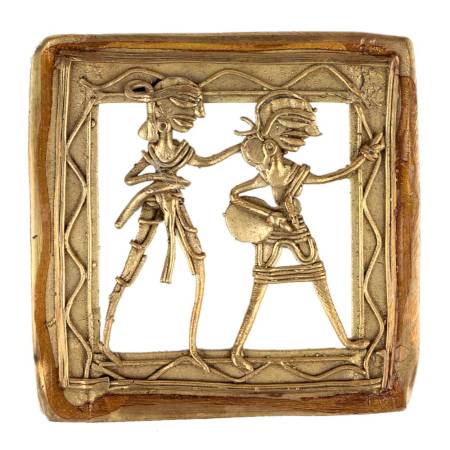
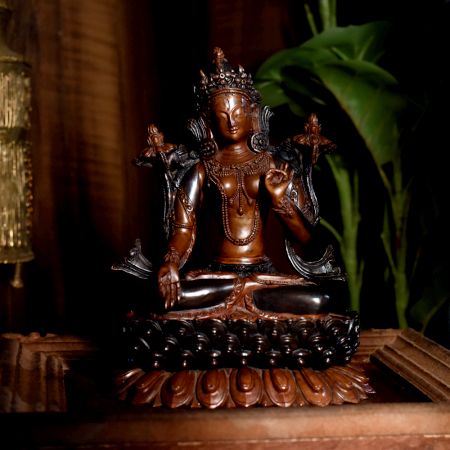
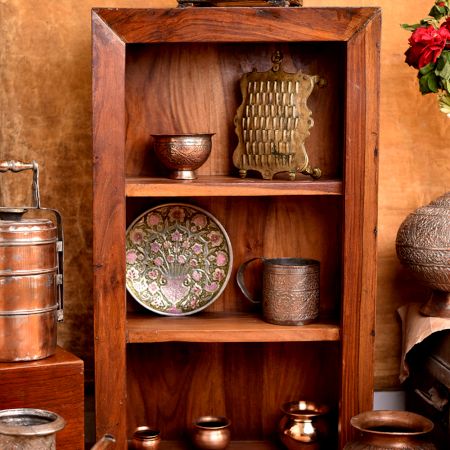
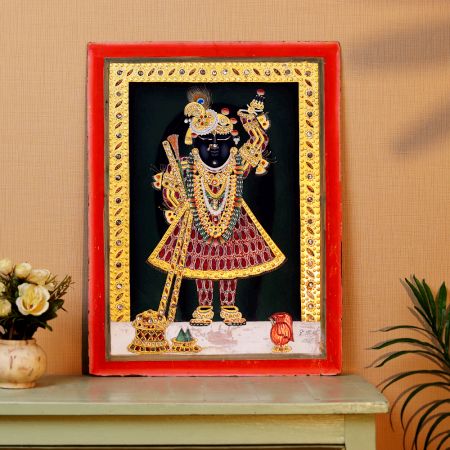
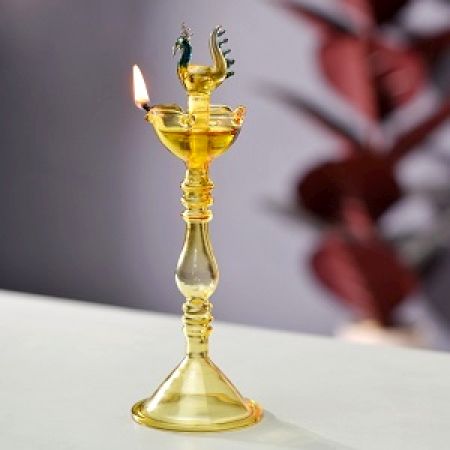
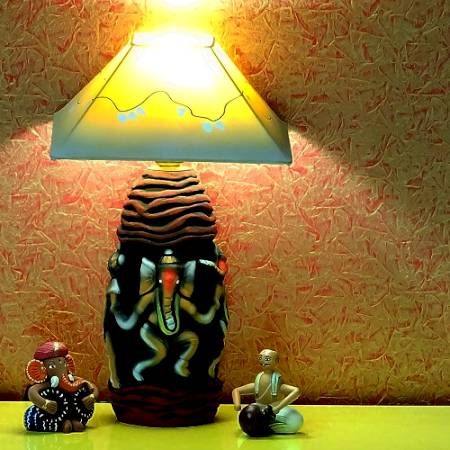
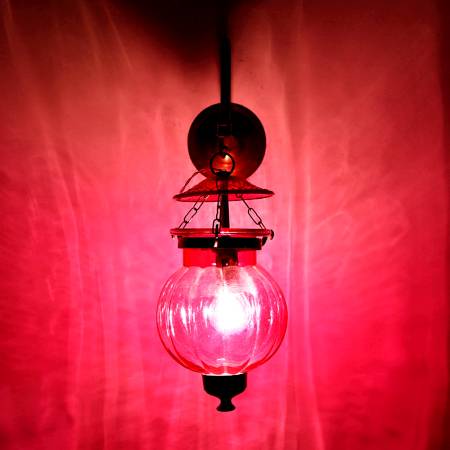


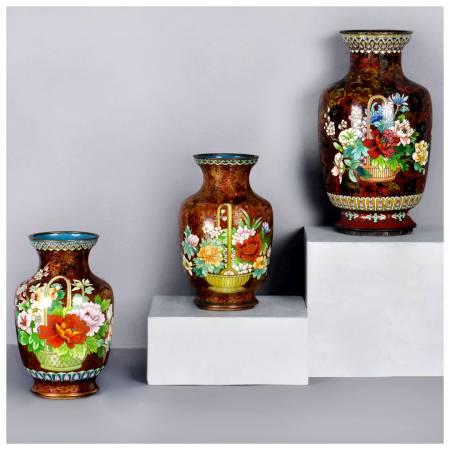
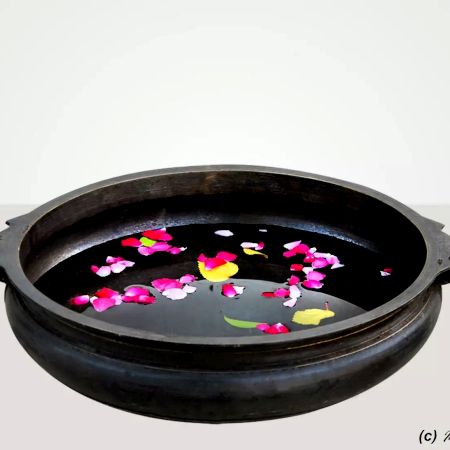
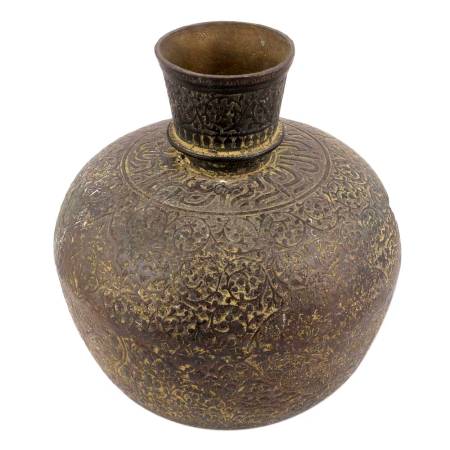
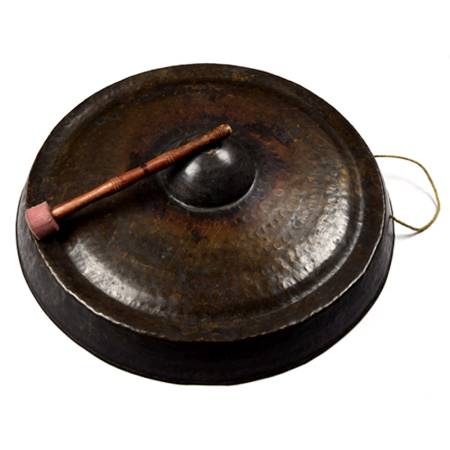



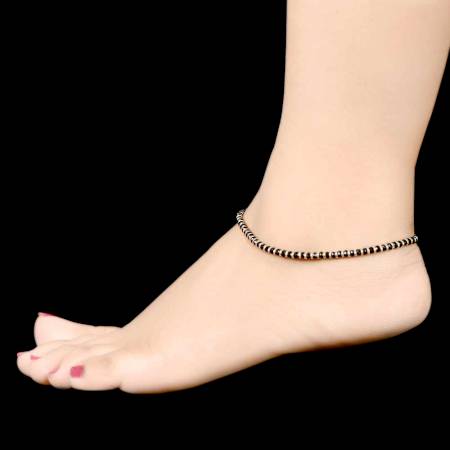
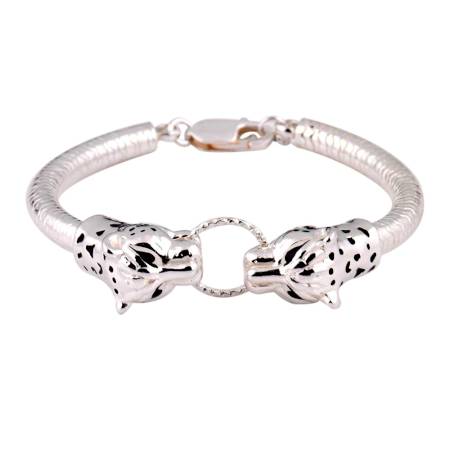
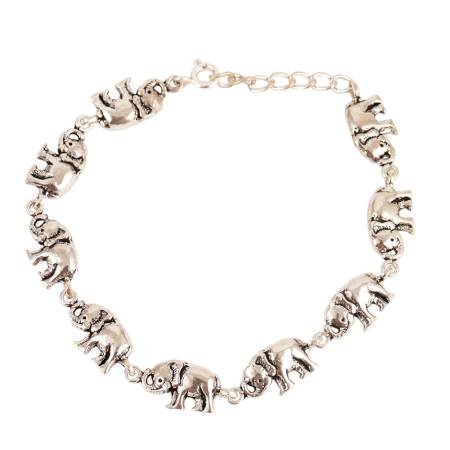
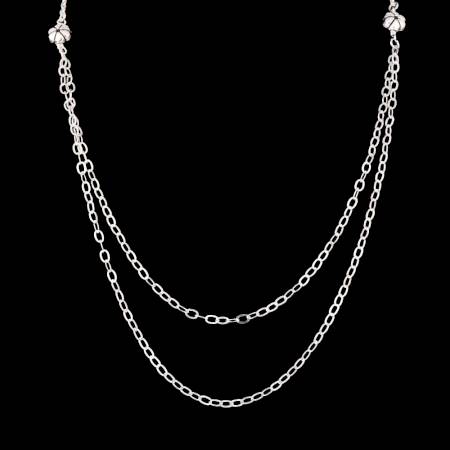
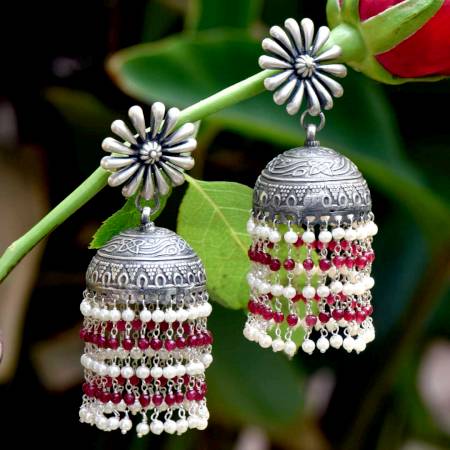
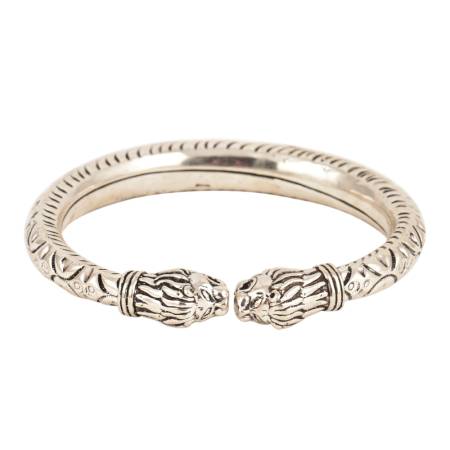
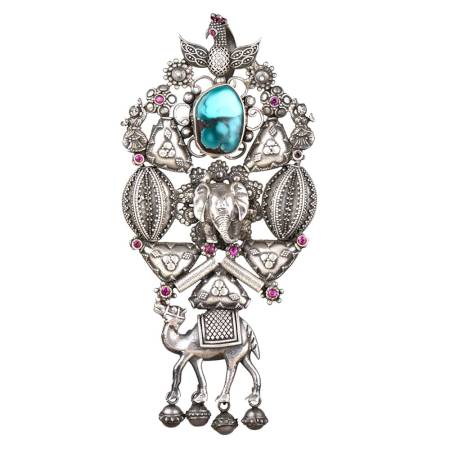

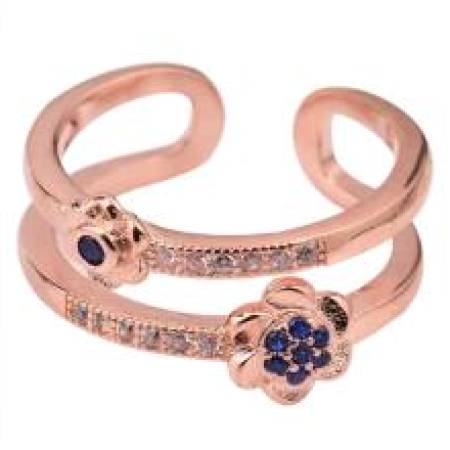
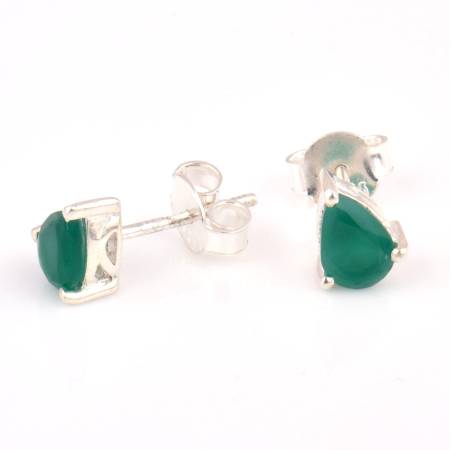







.JPG?ver=1.7)
.JPG?ver=1.7)
.JPG?ver=1.7)
.JPG?ver=1.7)
.JPG?ver=1.7)
.JPG?ver=1.7)
.JPG?ver=1.7)
.JPG?ver=1.7)
.jpg?ver=1.7)
.jpg?ver=1.7)
.JPG?ver=1.7)
.JPG?ver=1.7)




.JPG?ver=1.7)
.JPG?ver=1.7)
.JPG?ver=1.7)
.JPG?ver=1.7)
.JPG?ver=1.7)
.JPG?ver=1.7)
.JPG?ver=1.7)
.JPG?ver=1.7)
.JPG?ver=1.7)
.JPG?ver=1.7)
.JPG?ver=1.7)
.JPG?ver=1.7)
.JPG?ver=1.7)
.JPG?ver=1.7)
.jpg?ver=1.7)
.jpg?ver=1.7)
.JPG?ver=1.7)
.JPG?ver=1.7)
.JPG?ver=1.7)
.JPG?ver=1.7)
.JPG?ver=1.7)
.JPG?ver=1.7)
.JPG?ver=1.7)
.JPG?ver=1.7)
.JPG?ver=1.7)
.JPG?ver=1.7)
.JPG?ver=1.7)
.JPG?ver=1.7)
.JPG?ver=1.7)
.JPG?ver=1.7)
.JPG?ver=1.7)
.JPG?ver=1.7)
.JPG?ver=1.7)
.JPG?ver=1.7)
.JPG?ver=1.7)
.JPG?ver=1.7)
.JPG?ver=1.7)
.JPG?ver=1.7)
.JPG?ver=1.7)
.JPG?ver=1.7)
.jpg?ver=1.7)
.jpg?ver=1.7)
.JPG?ver=1.7)
.JPG?ver=1.7)
.JPG?ver=1.7)
.JPG?ver=1.7)
.JPG?ver=1.7)
.JPG?ver=1.7)
.jpg?ver=1.7)
.jpg?ver=1.7)
.JPG?ver=1.7)
.JPG?ver=1.7)
.JPG?ver=1.7)
.JPG?ver=1.7)
.JPG?ver=1.7)
.JPG?ver=1.7)
.JPG?ver=1.7)
.JPG?ver=1.7)
.JPG?ver=1.7)
.JPG?ver=1.7)
.JPG?ver=1.7)
.JPG?ver=1.7)
.JPG?ver=1.7)
.JPG?ver=1.7)
.JPG?ver=1.7)
.JPG?ver=1.7)
.JPG?ver=1.7)
.JPG?ver=1.7)
.JPG?ver=1.7)
.JPG?ver=1.7)
.JPG?ver=1.7)
.JPG?ver=1.7)
.JPG?ver=1.7)
.JPG?ver=1.7)
.JPG?ver=1.7)
.JPG?ver=1.7)
.JPG?ver=1.7)
.JPG?ver=1.7)
.JPG?ver=1.7)
.JPG?ver=1.7)
.jpg?ver=1.7)
.jpg?ver=1.7)


.JPG?ver=1.7)
.JPG?ver=1.7)
.JPG?ver=1.7)
.JPG?ver=1.7)
.JPG?ver=1.7)
.JPG?ver=1.7)
.JPG?ver=1.7)
.JPG?ver=1.7)


.JPG?ver=1.7)
.JPG?ver=1.7)
.JPG?ver=1.7)
.JPG?ver=1.7)
.JPG?ver=1.7)
.JPG?ver=1.7)
.JPG?ver=1.7)
.JPG?ver=1.7)
.JPG?ver=1.7)
.JPG?ver=1.7)
.JPG?ver=1.7)
.JPG?ver=1.7)
.JPG?ver=1.7)
.JPG?ver=1.7)
.JPG?ver=1.7)
.JPG?ver=1.7)
.JPG?ver=1.7)
.JPG?ver=1.7)
.JPG?ver=1.7)
.JPG?ver=1.7)
.jpg?ver=1.7)
.jpg?ver=1.7)
.JPG?ver=1.7)
.JPG?ver=1.7)
.JPG?ver=1.7)
.JPG?ver=1.7)
.JPG?ver=1.7)
.JPG?ver=1.7)

.jpg?ver=1.7)
.JPG?ver=1.7)
.JPG?ver=1.7)
.JPG?ver=1.7)
.JPG?ver=1.7)
.JPG?ver=1.7)
.JPG?ver=1.7)
.JPG?ver=1.7)
.JPG?ver=1.7)
.JPG?ver=1.7)
.JPG?ver=1.7)
.JPG?ver=1.7)
.JPG?ver=1.7)
.JPG?ver=1.7)
.JPG?ver=1.7)
.JPG?ver=1.7)
.JPG?ver=1.7)
.JPG?ver=1.7)
.JPG?ver=1.7)

.jpg?ver=1.7)
.jpg?ver=1.7)
.jpg?ver=1.7)
.JPG?ver=1.7)
.JPG?ver=1.7)
.JPG?ver=1.7)
.JPG?ver=1.7)
.JPG?ver=1.7)
.JPG?ver=1.7)


.JPG?ver=1.7)
.JPG?ver=1.7)
.jpg?ver=1.7)
.jpg?ver=1.7)
.JPG?ver=1.7)
.JPG?ver=1.7)
.JPG?ver=1.7)
.JPG?ver=1.7)
.JPG?ver=1.7)
.JPG?ver=1.7)
.JPG?ver=1.7)
.JPG?ver=1.7)
.JPG?ver=1.7)
.JPG?ver=1.7)
.JPG?ver=1.7)
.JPG?ver=1.7)
.JPG?ver=1.7)
.JPG?ver=1.7)
.jpg?ver=1.7)
.jpg?ver=1.7)
.JPG?ver=1.7)
.JPG?ver=1.7)
.JPG?ver=1.7)
.JPG?ver=1.7)
.JPG?ver=1.7)
.JPG?ver=1.7)
.JPG?ver=1.7)
.JPG?ver=1.7)
.JPG?ver=1.7)
.JPG?ver=1.7)
.jpg?ver=1.7)
.jpg?ver=1.7)
.jpg?ver=1.7)
.jpg?ver=1.7)
.JPG?ver=1.7)
.JPG?ver=1.7)
.JPG?ver=1.7)
.JPG?ver=1.7)
.JPG?ver=1.7)
.JPG?ver=1.7)
.JPG?ver=1.7)
.JPG?ver=1.7)
.JPG?ver=1.7)
.JPG?ver=1.7)
.JPG?ver=1.7)
.JPG?ver=1.7)
.JPG?ver=1.7)
.JPG?ver=1.7)
.JPG?ver=1.7)
.JPG?ver=1.7)
.JPG?ver=1.7)
.JPG?ver=1.7)
.JPG?ver=1.7)
.JPG?ver=1.7)
.JPG?ver=1.7)

.JPG?ver=1.7)

.JPG?ver=1.7)

.JPG?ver=1.7)

.JPG?ver=1.7)
